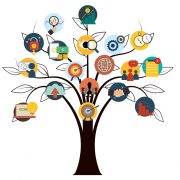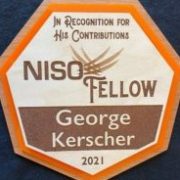Global Specifications for Accessible Publications
 Accessible books were originally produced by organizations working for people with disabilities who are, of course, the accessibility experts. Publishers are now expected to produce accessible publications but they are not accessibility experts like the organizations working for people with disabilities.
Accessible books were originally produced by organizations working for people with disabilities who are, of course, the accessibility experts. Publishers are now expected to produce accessible publications but they are not accessibility experts like the organizations working for people with disabilities.
They need accessibility specifications and guidelines to conform to and to refer to for guidance. At the same time, it is important to verify the accessibility claims of publishers, and this can only be done if there is a common accessibility specification.
We know that for efficient implementation of accessibility in publications we also need tools for checking accessibility and tools for accessible production throughout the supply chain. These tools need a common accessibility specification to which they can all conform to—what we don’t want is one tool that highlights one accessibility issue and other tools which highlight another.
We Need One Accessibility Specification that can be Adopted Worldwide.
Let us look at an example. Different countries in the world have different standards for electricity: the US has two strips 110V, Europe has two pin 220V, the UK has something different again, and countries in Asia also have different standards. International travellers are used to the annoyance of making their appliances work with different electricity standards. It would have been so simple if we had one electric standard which was accepted around the world.
We should learn from this and we prevent any fragmentation of our accessibility standards for publications.
The digital publications market is borderless so it is much more easy to sell digital publications in different countries. EU publishers supply ebooks to different parts of the world and publications from other continents also supply their ebooks to Europe.If we have different accessibility standards, we would create a enormous amount of confusion for publishers, who are already struggling with different file formats for different ereaders. Imagine if they have to be congisant of different accessibility standards also?

The different areas of the publishing supply chain all need a point of reference for ensuring accessibility. What if a publisher produces accessible publication but:
- the aggregator does not support accessibility
- the retailer does not expose accessibility metadata and does not provide accessible user interface
- the reading system does not support accessibility
If any link of this supply chain is not able to support accessibility, the person with disability will not be able to read the publication. Each and every element of the supply chain needs to conform to the same accessibility requirements.
Furthermore, this would result in a suboptimal reading experience for people with disabilities. People with disabilities especially senior citizens need additional guidance for using new technology like touch screen, smart phones etc., how can we expect them to make sure that their ereaders conform to different accessibility standards?

It is very important to have one international standard that provides a set of common requirements for conformance and highlighting violations.
Is there an Existing Standard that can be Adopted?
The good news is that there is an accessibility standard for publications which was created in 2017. The EPUB Accessibility Conformance and Discovery specifications:
- Build on WCAG
- Add publishing specific requirements and accessibility metadata requirements.
- Designed at abstract level so that it can be used for publications in the format other than EPUB also.
- Originally developed by International Digital Publishing Forum
- Maintained by World Wide Web Consortium
- Progressing towards becoming ISO Standard.
Are there Tools Available to Ensure Conformance to the EPUB Accessibility Standard?
Having a specification is great, but to ensure its implementation on the ground, we need conformance tools. It is impossible to imagine the implementation of accessibility throughout the supply chain without these tools:
- Ace by DAISY (Accessibility Checker for EPUB)
- DAISY Ace SMART (Simple Manual Accessibility Reporting Tool)
- Ace plugin for Sigil
- Ace at the backend of Born Accessible Checker
Are Big Publishers Using the EPUB Accessibility Conformance and Discovery Specifications?
Many publishers are either using the specification or in the process of up grading their workflows for implementing the specification. To name but a few: Pearson, U.S., Hachette Livre, France, Wiley, U.S., Macmillan Learning, U.S., Fondazione LIA, Italy, National library of Korea, Korea, Réseau Canopé, France, Kogan Page, U.K.
In conclusion:we have a international accessibility specification for ebooks, we have tools that conform to it, and we already have big publishers adopting the standard. We are in the beginning of a revolution.
We have a life time opportunity to achieve the era of born accessible publications.
This article was submitted by Avneesh Singh, COO of The DAISY Consortium and newly appointed board member of the W3C Advisory Board. It is based on a presentation given at the 2019 DPUB Summit in Paris.







